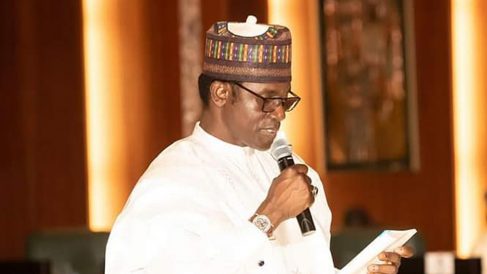President Joe Biden says the United States forces can’t be fighting a war Afghan forces are not willing to fight themselves. He said the US mission in the Taliban-torn Afghanistan 20 years ago was to get the attackers of September 11, 2001 and not to build the landlocked Asian country. “American forces cannot and should not be fighting in a war and dying in a war that Afghan forces are not willing to fight for themselves,” Biden said. The militants captured Kabul, and many other cities, with little bloodshed — but in the capital, a sense of panic and fear overwhelmed residents, some of whom worried about a repeat of the insurgents’ brutal Islamist rule from 1996 to 2001. At the airport, frantic Afghans tried to board the few flights available throughout the day, before US forces — sent in to secure the facility — shut down military and civilian operations. “We are afraid to live in this city,” a 25-year-old ex-soldier told AFP as he stood among huge crowds on the tarmac. “Since I served in the army, the Taliban would definitely target me.” The United States — which was left shocked by the rapid collapse of the Afghan government — has sent 6,000 troops to ensure the safe evacuation of embassy staff, as well as Afghans who worked as interpreters or in other support roles. Full transcript of President Biden’s remarks on Afghanistan Good afternoon. I want to speak today to the unfolding situation in Afghanistan, the developments that have taken place in the last week and the steps we’re taking to address the rapidly evolving events. My national security team and I have been closely monitoring the situation on the ground in Afghanistan and moving quickly to execute the plans we had put in place to respond to every contingency, including the rapid collapse we’re seeing now. I’ll speak more in a moment about the specific steps we’re taking. But I want to remind everyone how we got here and what America’s interests are in Afghanistan. We went to Afghanistan almost 20 years ago with clear goals: get those who attacked us on Sept. 11, 2001, and make sure Al Qaeda could not use Afghanistan as a base from which to attack us again. We did that. We severely degraded Al Qaeda and Afghanistan. We never gave up the hunt for Osama bin Laden and we got him. That was a decade ago. Our mission in Afghanistan was never supposed to have been nation-building. It was never supposed to be creating a unified, centralized democracy. Our only vital national interest in Afghanistan remains today what it has always been: preventing a terrorist attack on the American homeland. I’ve argued for many years that our mission should be narrowly focused on counterterrorism, not counterinsurgency or nation-building. That’s why I opposed the surge when it was proposed in 2009 when I was vice president. And that’s why as president I’m adamant we focus on the threats we face today, in 2021, not yesterday’s threats. Today a terrorist threat has metastasized well beyond Afghanistan. Al Shabab in Somalia, Al Qaeda in the Arabian Peninsula, Al Nusra in Syria, ISIS attempting to create a caliphate in Syria and Iraq and establishing affiliates in multiple countries in Africa and Asia. These threats warrant our attention and our resources. We conduct effective counterterrorism missions against terrorist groups in multiple countries where we don’t have permanent military presence. If necessary, we’ll do the same in Afghanistan. We’ve developed counterterrorism over-the-horizon capability that will allow us to keep our eyes firmly fixed on the direct threats to the United States in the region, and act quickly and decisively if needed. When I came into office, I inherited a deal that President Trump negotiated with the Taliban. Under his agreement, U.S. forces would be out of Afghanistan by May 1, 2021, just a little over three months after I took office. U.S. forces had already drawn down during the Trump administration from roughly 15,500 American forces to 2,500 troops in country. And the Taliban was at its strongest militarily since 2001. The choice I had to make as your president was either to follow through on that agreement or be prepared to go back to fighting the Taliban in the middle of the spring fighting season. There would have been no cease-fire after May 1. There was no agreement protecting our forces after May 1. There was no status quo of stability without American casualties after May 1. There was only a cold reality of either following through on the agreement to withdraw our forces or escalating the conflict and sending thousands more American troops back into combat in Afghanistan and lurching into the third decade of conflict. I stand squarely behind my decision. After 20 years, I’ve learned the hard way that there was never a good time to withdraw U.S. forces. That’s why we’re still there. We were clear about the risks. We planned for every contingency. But I always promised the American people that I will be straight with you. The truth is, this did unfold more quickly than we had anticipated. So what’s happened? Afghanistan political leaders gave up and fled the country. The Afghan military collapsed, sometimes without trying to fight. If anything, the developments of the past week reinforced that ending U.S. military involvement in Afghanistan now was the right decision. American troops cannot and should not be fighting in a war and dying in a war that Afghan forces are not willing to fight for themselves. We spent over a trillion dollars. We trained and equipped an Afghan military force of some 300,000 strong. Incredibly well equipped. A force larger in size than the militaries of many of our NATO allies. We gave them every tool they could need. We paid their salaries, provided for the maintenance of their air force, something the Taliban doesn’t have. Taliban does not have an air force. We provided close air support.














